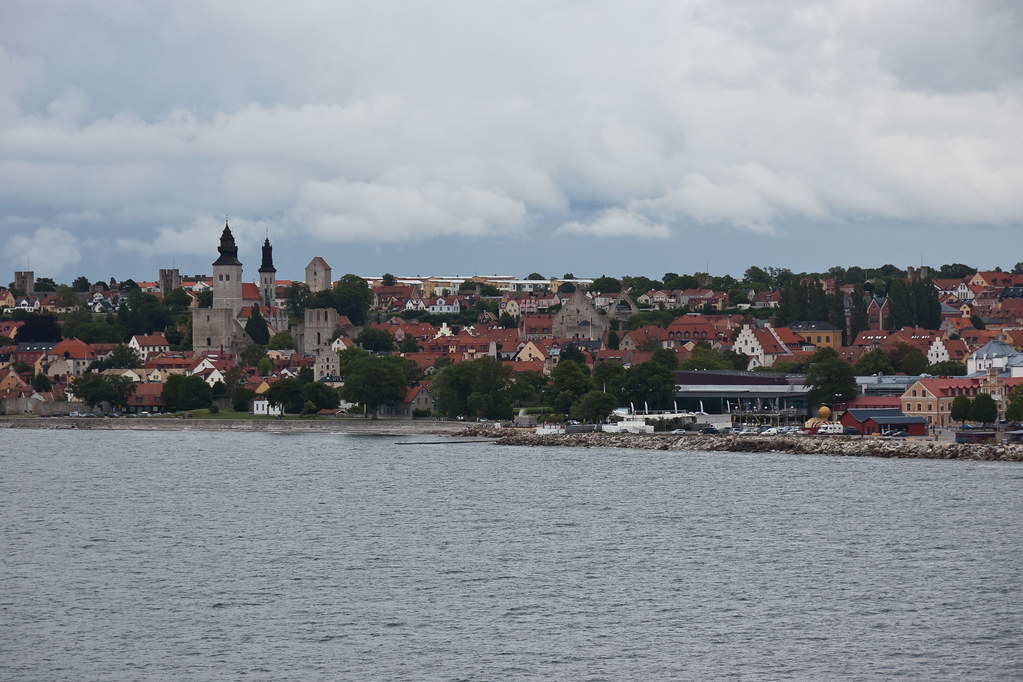
Above: The city of Visby as seen from the Ryndam, which had to anchor offshore as there are no docks big enough for cruise ships on Gotland!
The population of the island is about 57,221, of which about 22,200 live in Visby. The island's main sources of income are tourism, agriculture, and concrete production from locally mined limestone. Early in its history, Gotland became a commercial centre and the town of Visby was the most important Hanseatic city in the Baltic Sea.
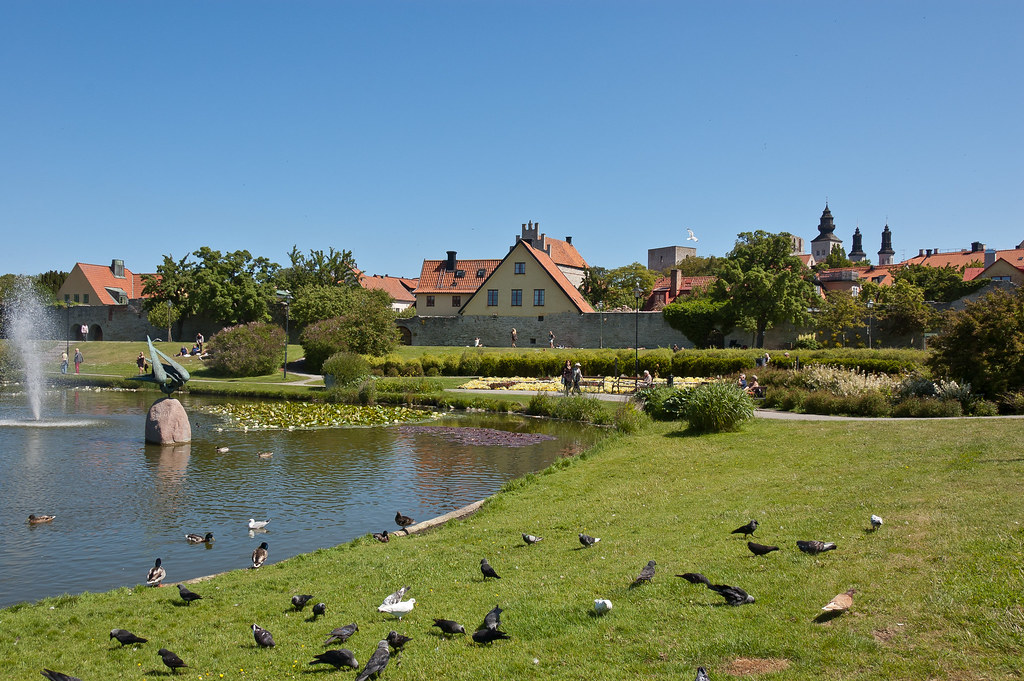
Above: Beautiful green spaces are everywhere in Visby.
The earliest history of Visby is uncertain, but it is known to have been a centre of merchandise around 900 AD. It was inhabited as early as the Stone Age, probably because of the access to fresh water and a natural harbour.
During my time on Gotland, I took a tour to Visby's surrounding area and visited a beautiful tiny church. Gotland is famous for its 94 medieval churches, most of which are restored and in active use.
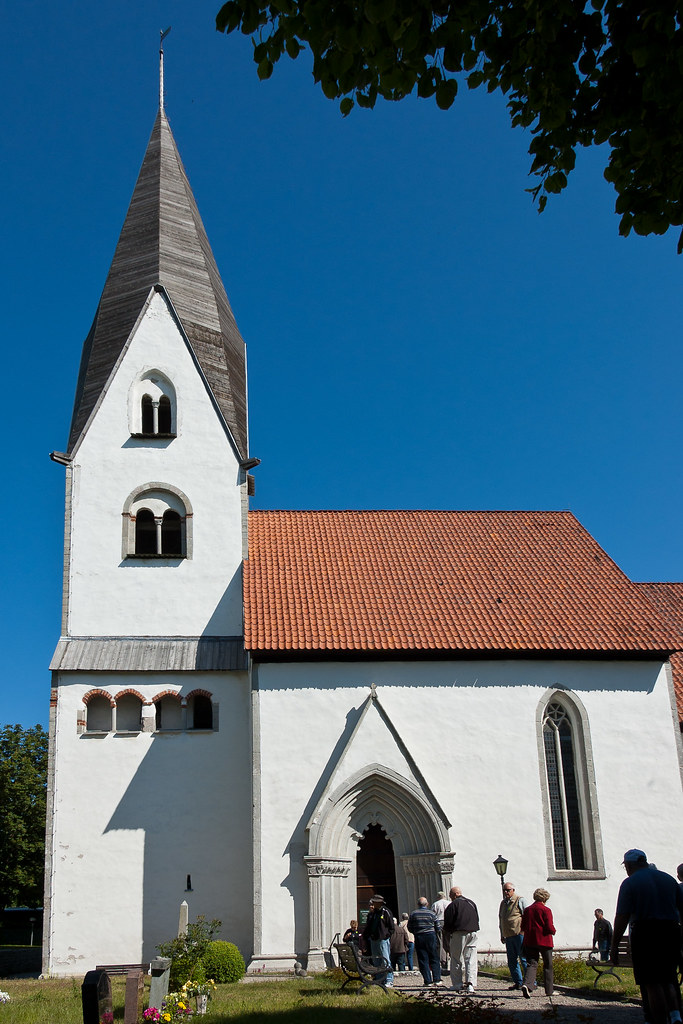
Above: A restored medieval church located in a tiny hamlet!
These churches exhibit two major styles of architecture: Romanesque and Gothic. The older churches were constructed in the Romanesque style from 1150–1250 AD. The newer churches were constructed in the Gothic architectural style that prevailed from about 1250-1400 AD. The oldest painting inside one of the churches on Gotland stretches as far back in time as the 12th century.
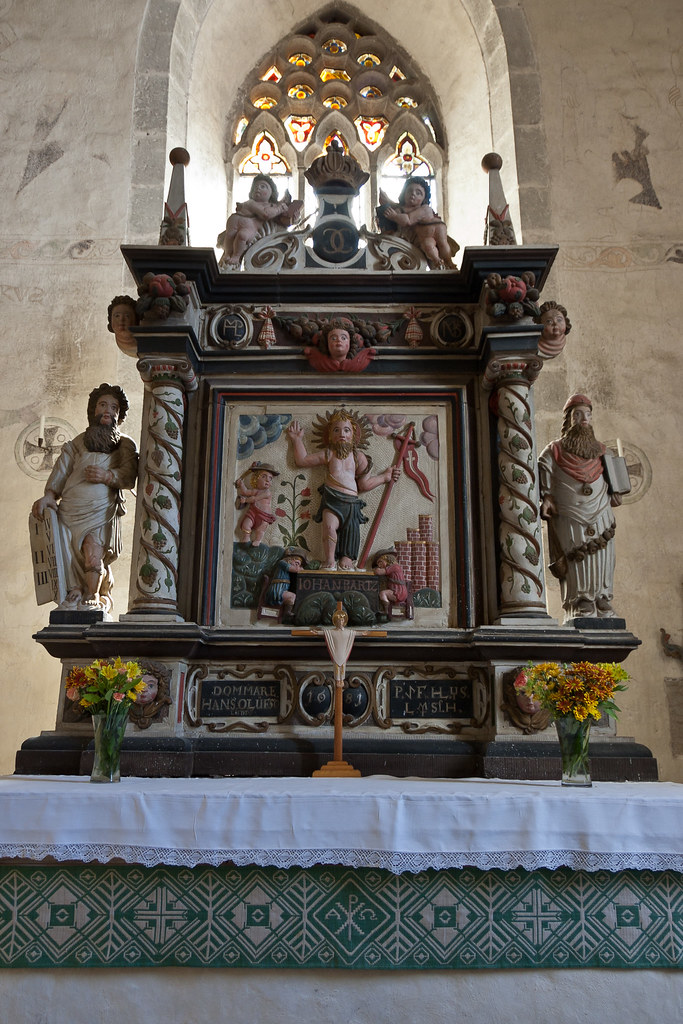
Above: The original altar inside church, restored and repainted.
On our tour we also visited a small fishing village with wooden-hut houses! There wasn't much to see but there were toilets - a very important consideration for Holland America's clientele!
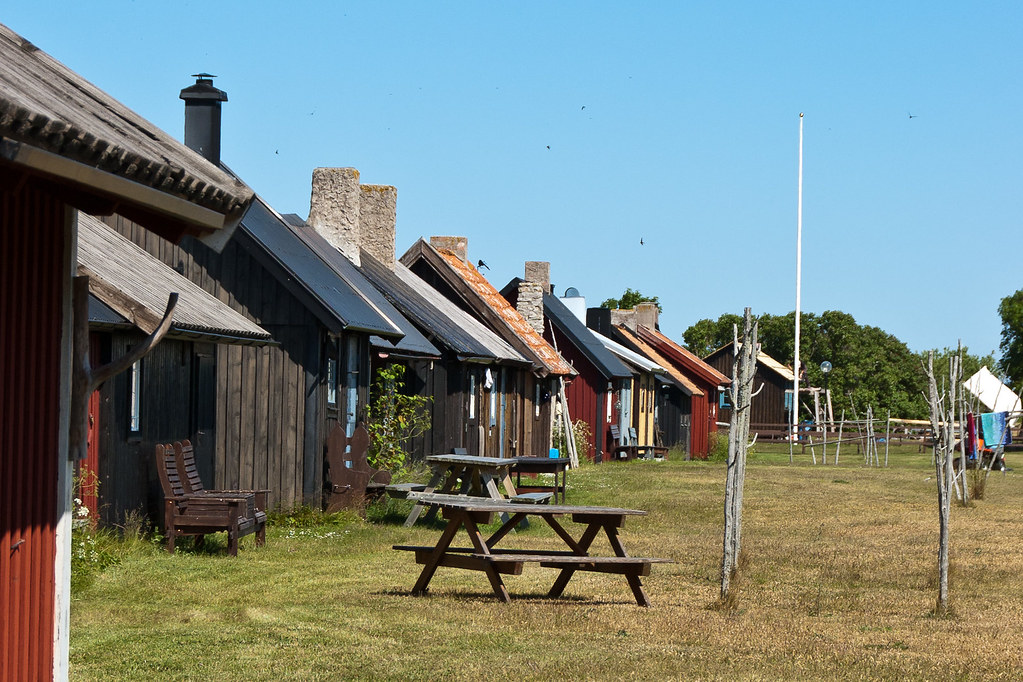
Above: Fishing Village.
Also on our tour, we made a brief stop at an ancient stone circle - smaller than Stonehenge, but from a similar time.

Above: An ancient stone circle surrounded by woodland.
On our return to Visby we took a tour of the town, walking through the Botanical Gardens before heading up to the north of the town and entering through the northern city wall.
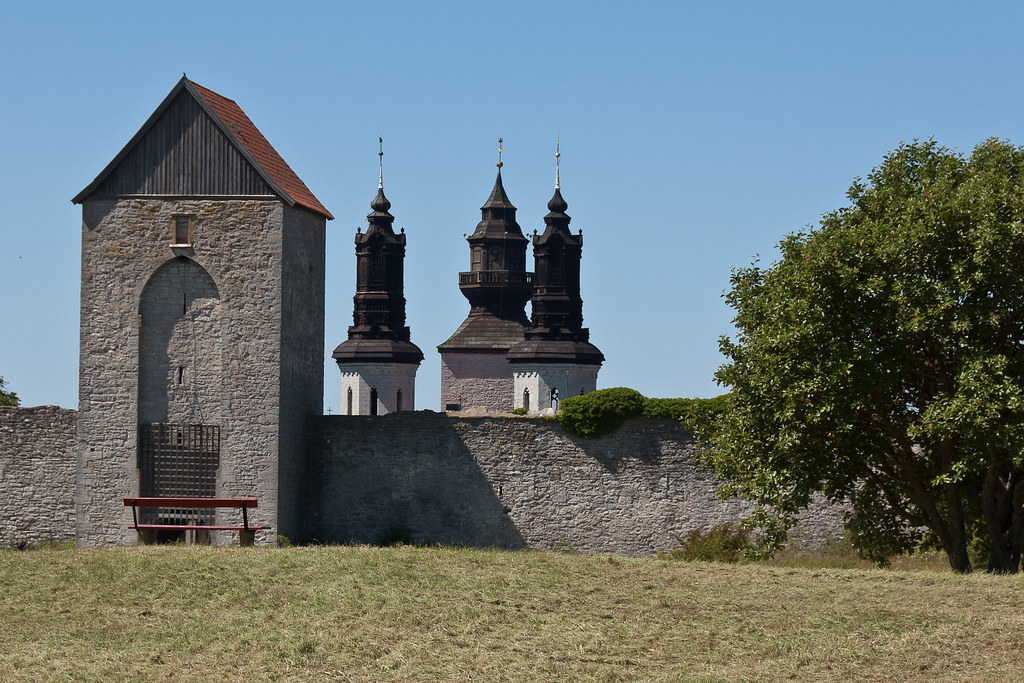
Above: The northern part of the city wall.
Visby is arguably the best-preserved medieval city in Scandinavia and has been named a UNESCO World Heritage Site. Among the most notable historical remains are the 2 mile long stone wall called Ringmuren ("the Ring Wall"), that encircles the city. The work on the ring wall was likely begun in the 12th century. Around 1300, it was rebuilt to reach its current height, acquiring the characteristic towers, although some towers were not constructed until the 15th century.
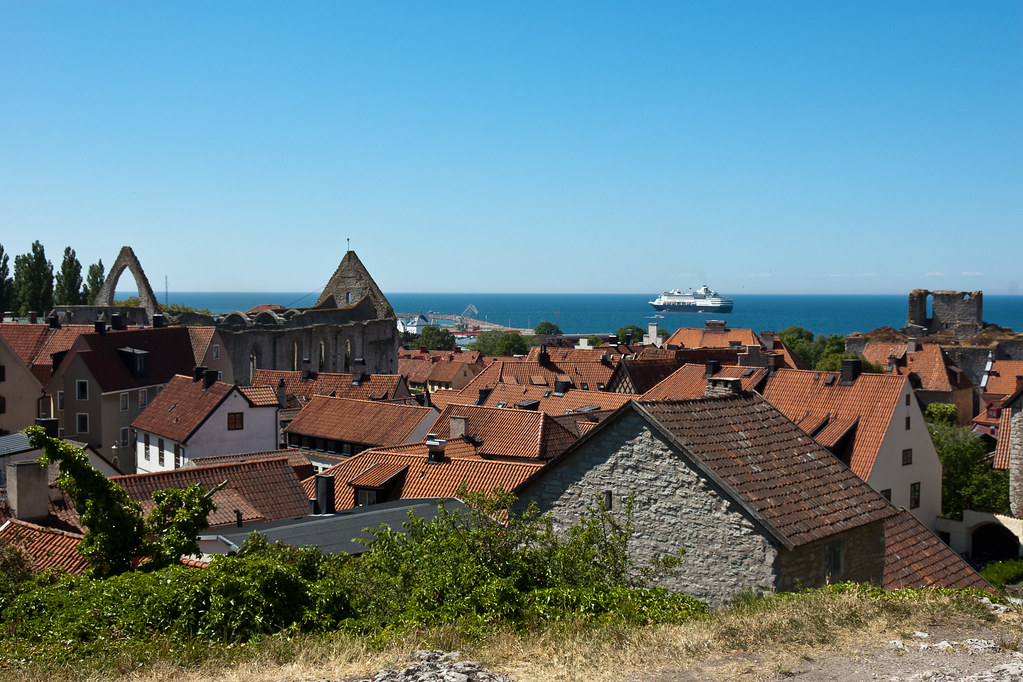
Above: The ruins of Visby's church (left) which was burned down in 1525 by the Germans. You can see the Ryndam anchored offshore on the right.
Our final stop on the tour was Visby Cathedral, dedicated to Saint Mary and constructed in the 12th century. It was reshaped in the 13th century to its current appearance, and was officially opened in 1225 by the bishop of the Swedish city of Linköping.
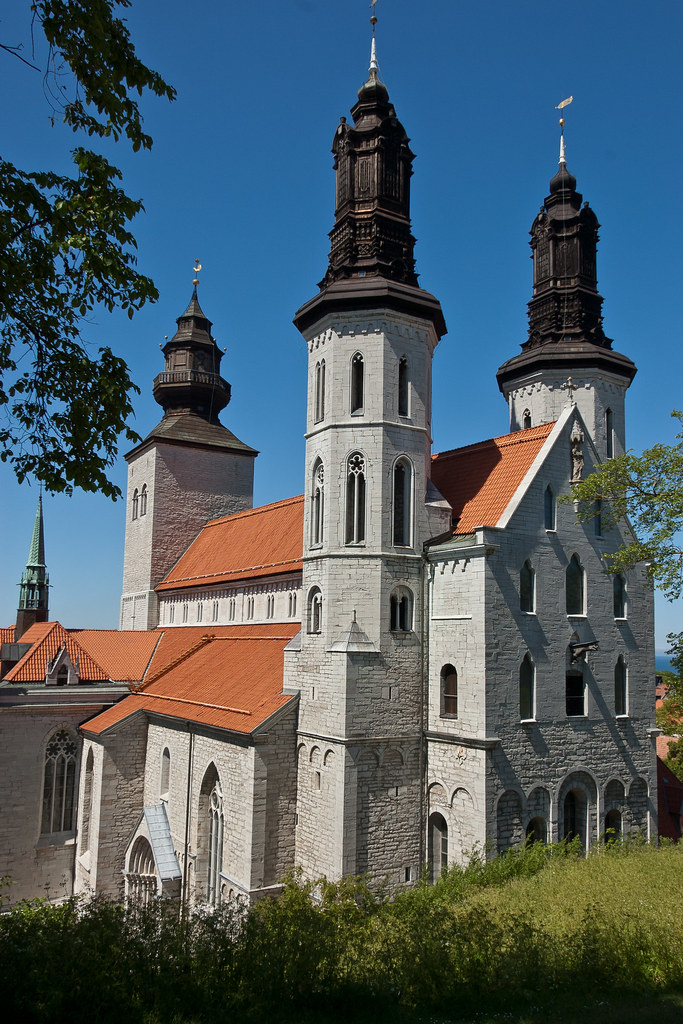
Above: Visby Cathedral.
I will leave you with a shot from inside the Cathedral. After five months in Europe, many of these ancient buildings began to blend into one but there were still individual moments of beauty waiting to be discovered such as this:
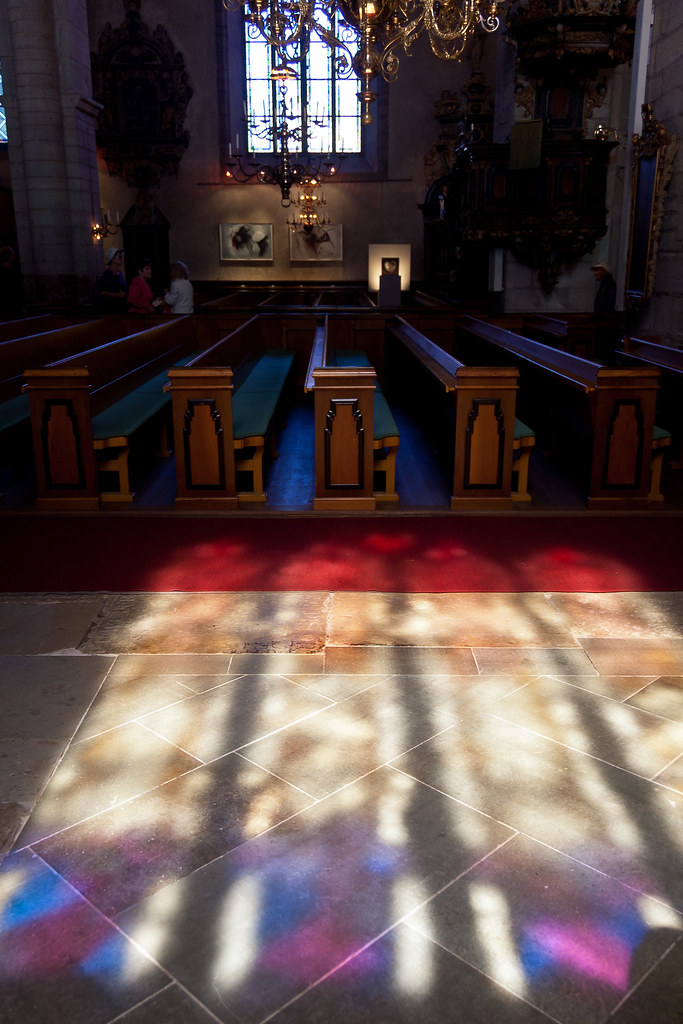

No comments:
Post a Comment